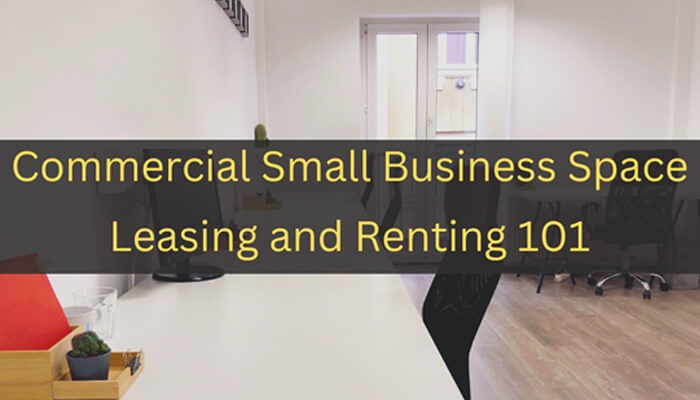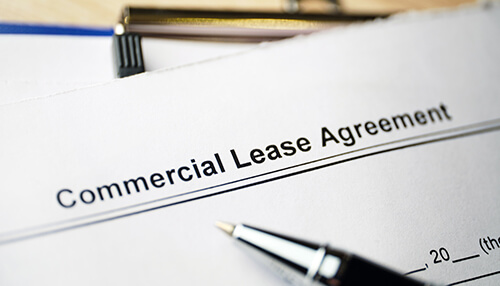A crucial first step for any new business owner is signing a lease. You’ll undoubtedly need to get a place for your company at some point. Whether you’re launching a store, moving into an office, or renting out facilities for manufacturing. Finding the space you need might often take years due to the complexity of the commercial real estate market.
Office space leasing is a significant financial choice. It’s quite risky to rent office space. Frequently, you must sign a multi-year lease, and even for a very modest office, the monthly rent may be larger than your home mortgage. Worse yet, if your firm shuts down, or you have to move because you outgrew the facility, the lease may still obligate you to pay rent.
Therefore, before signing a business lease, it’s crucial to assess the area, the structure, the lease’s terms, and even the landlord. Here are some important things to look into.
What Is a Commercial Lease?
Every time a company rents a commercial property to operate from a location, a commercial lease is necessary. Office space for lease is a binding contract between a landlord and a tenant company. This lease agreement grants a tenant-specific right in relation to the building.
A landlord agrees to rent out the commercial property, which is often a small business space in exchange for money. Commercial leases often last three to five years, forging a lasting bond between the lessor and lessee.
Commercial Lease Agreement Terms to Know
Since a commercial lease agreement is a contract, it needs to have a few crucial components to be enforceable. The following is an overview of the terms that are most frequently found in business leasing agreements.
1. Base rent or rent amount: This sum is determined based on the area of the space. Verify that the estimate provided by the landlord genuinely reflects usable space. There is no income requirement for this rent.
2. Available square footage: In the case of shared spaces, this refers to the amount of space that is set aside for the company as a tenant.
3. Improvements: The types of repairs and enhancements that can be done to the facility are outlined in this section of the commercial lease agreement. It also contains who is liable for the associated costs.
4. Rent prices raises: The percentage of the total rent that is often used to calculate rent increases can vary from year to year. You can discuss capping rent increases with the landlord.
5. Security remittances: This sum will hold the location till the paperwork is completed. The sum should be mentioned in the leasing agreement and in advance.
6. How long is the lease? The start and termination dates of the lease are frequently specified in the leasing agreement.
7. Lease grants: This paragraph specifies that the landlord will pass the property over to the tenant. This is done after the fulfillment of all requirements, such as paying the security deposit.
8. Commencement date: This is the day the tenant moves in, and the renter starts being responsible for paying rent and taking care of the rental property.
9. Option to purchase: This clause says that the tenant has the option to purchase the property at any moment throughout the term of the lease for a predetermined sum. Although it’s not required, it doesn’t do any harm to provide this provision. The agreement may also prohibit the renter from purchasing the property while the lease is in effect. In either case, having it in writing is a smart idea.
10. Extensions: An extension of the Agreement may be agreed to in writing and shall be executed by the Parties.
11. Late fees: The business lease agreement specifies a late fee that the tenant will have to pay if they are late on their rent payments. A fixed fee or a portion of the monthly rent may apply.
12. Taxes: All property taxes have real estate taxes, and the clause that outlines who is responsible for paying them is listed in this section.
13. Obligation to repair: This section outlines the types of repairs that the landlord is responsible for. This can include material flaws, faults, or failures that are essential to the property’s operation. It also describes the maintenance obligations of tenants.
14. Permits: Both parties are responsible for obtaining all licenses and permits required to make repairs to the rental property.
15. Tenant’s indemnification: This clause essentially absolves the landlord of all responsibility for any harm, loss, claims, or damage. Unless those things are a direct result of the landlord’s willful actions, inactions, or gross negligence.
- Rent reduction or adjustment: In the event of property damage from a fire or other natural disaster, it is stated in this section whether the rent would be reduced or abolished.
- Condemnation: Although it’s frequently disregarded, this sentence is crucial. It establishes what occurs if the landlord’s rental property is taken from him or her by a public entity for use. Whether through condemnation or eminent domain.
Tips to Follow Before Signing Commercial Lease for Office Spaces
You must conduct some research before signing a commercial lease deal. While exploring, be sure to follow these instructions:
1. Understand the Location
For a small business to succeed, location is crucial. So, while you’re looking around for the ideal properties, take the time to select the ideal new home for your company.
For small firms. It will be more difficult if the building where you rent space is located in a dangerous or barren area of town. In a neighborhood with many abandoned or dilapidated buildings, or next to a place that draws sketchy characters.
2. Find Out About the Landlord
Your immediate landlord might not always be the legal owner of the property. In either case, learn as much as you can about the building’s owner and landlord. Together, you’re going into business, so be sure you know who they are, what their financial status is, and whether or not they pay their bills on time.
In some areas, for instance, even if a business has been on time with every payment. A tenant or business may wind up being evicted in the event of foreclosure. This can happen if a landlord fails to make payments to the building owner or mortgage payments to a bank. That’s only one illustration of how a landlord-tenant, or building-owner-tenant relationship might go wrong.
3. Find Out Who Owns the Building
The building’s ownership must be determined. Is it an LLC (Limited Liability Company), a big company, or just one person? It could be more challenging to settle building-related issues if the company owner is not local. Getting the attention of the building owner might be difficult, even when they are close by.
If at all feasible, speak with a few other tenants to learn how quickly issues are fixed. Another choice is to ask the landlord for the contact details of the previous occupants of the property you want to rent. Ask them about their experiences over the phone.
4. Consider Parking Space
Are there enough parking spaces on the grounds for your staff and vendors? Does the lot need restripping or repaving? Negotiate with your landlord to agree to terms like a particular number of parking spaces. Also, make sure the condition shows up in print in your lease agreement. If you live somewhere that is prone to snow or ice, you may wish to invest in some brown salt for gritting so that you can make sure that the area stays safe for staff and visitors, even in the coldest weather.
5. CAM Expenses
Costs associated with common area maintenance (CAM) are another expense that landlords occasionally shift onto their renters. Landscaping, holiday decorations, parking lot upgrades, and property taxes are a few examples of CAM costs.
The landlord has no incentive to control costs if the renter agrees to pay for all CAM charges, and you can be sending large checks. Instead, make an effort to negotiate caps on these costs.
6. Find Out About Rent Increases
Annual percentage rent increases are frequently included in leases. The lease contract should explicitly state these. See whether you can have the lease written with a renewal option, at the same preset rise rate. This will help to prevent your rent from rising at the end of the first multi-year term. You might then be forced to choose between paying the increased rate or spending a sizable quantity of money to relocate.
7. Know the Length of Your Lease
First, decide whether your company would gain more from a short-term or long-term lease. A short-term lease can be more appropriate if you’re a fresh startup because your firm may appear substantially different in a few years. A long-term lease makes greater financial sense if you are an established company. And also if you have a specific property in mind to conduct business in for years to come.
8. Who Handles Repairs
Who is liable for specific utility costs, upkeep, and repairs should be specified in your lease. Many commercial leases assign these duties in a variety of ways. Don’t assume that the costs you may eventually be expected to pay by your landlord are included in your monthly rent.
There are situations where tenants are stuck paying utilities that were not included in their lease. Make sure the lease specifies and assigns responsibility for all anticipated costs.
Also, consider what utilities you will be required to purchase? Do you have to pay for trash collection, housekeeping services, winter snow removal, or any other common area fees? Ask how much the previous monthly cost is as if something isn’t included.
Repairs are often handled by the landlord when you rent a house or apartment. With commercial real estate, you could be entirely responsible when you need a commercial plumber in Cincinnati. Make sure the lease specifies it.
9. Consider the Cancellation Term
Be aware of any additional costs or penalties you might incur by breaking your lease early after you’ve decided on a lease term. Negotiate this with your landlord if your lease doesn’t already have a condition that allows you to break it without incurring extra fees.
The business might outgrow the space if for some unforeseen reason your firm can no longer operate in the area. An “out” provision outlines the conditions under which you can end the lease.
For instance, certain landlords may agree to a provision allowing you to break the lease without charging a penalty fee. This can happen as long as you give them a specific period of notice time first (usually at least three months).
Conclusion
It might be difficult to find an office space that meets all of your requirements for amenities, size, budget, and location. But, with the appropriate planning and direction, you may complete this process with ease. Spend some time coming up with a plan that will make things easier for you by having the appropriate amount of preparation and study.




